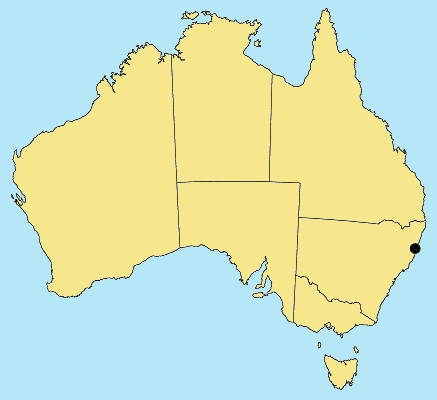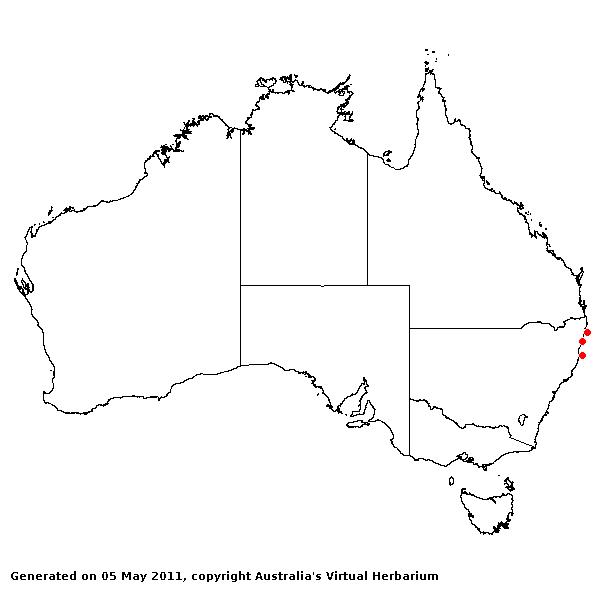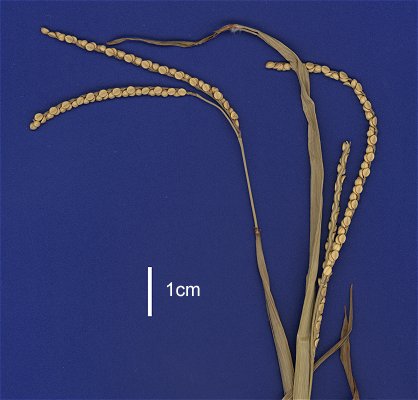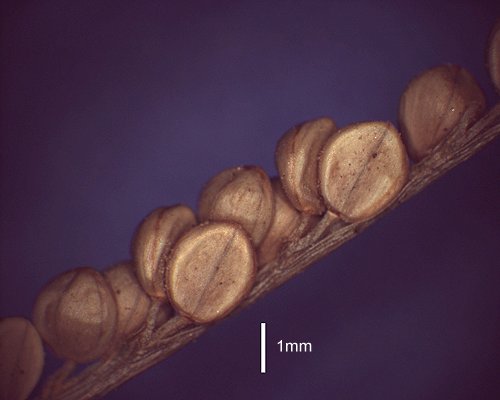Paspalum ciliatifolium* Michx. Fl. Bor.-Amer. 1: 44 (1803).
Classification. (GPWG 2001) : Subfamily Panicoideae. Paniceae.
Type of Basionym or
Protologue Information: LT: A. Michaux s.n., third specimen, USA:
Carolina (P-MICHX, ILT: NY-6618, US-2942147 (fragm. ex P)). LT designated by
Hitchcock, Contr. U.S. Natl. Herb. 12(3): 145 (1908).
Recent synonyms:
P. setaceum var. ciliatifolium.
Key references
(books and floras): [2002] D.Sharp & B.K.Simon, AusGrass, Grasses of
Australia, [2008] S.W.L.Jacobs, R.D.B.Walley & D.J.B.Wheeler, Grasses
of New South Wales (327).
Illustrations:
[2008] S.W.L.Jacobs, R.D.B.Whalley & D.J.B.Wheeler, Grasses of New South
Wales, 4th edn (327).
Habit. Culms
100 cm tall. Leaf-sheaths glabrous on surface. Ligule an eciliate membrane, 1
mm long. Leaf-blades 20 mm wide. Leaf-blade surface indumented.
Inflorescence.
Inflorescence compound, a panicle of racemes. Racemes 1–4, spreading, 3–10 cm
long.
Spikelets.
Fertile spikelets 1.9–2.1 mm long.
Glumes. Upper
glume 1.9–2.1 mm long, 3 -nerved. Upper glume surface indumented. Florets.
Basal sterile florets 1. Lemma of lower sterile floret 2–3 -nerved.
Fertile lemma 1.9–2.1
mm long.
Continental
Distribution: Australasia, or North America.
Australian
Distribution: New South Wales.
New South Wales:
North Coast.
Notes.
Introduced. North from Macksville, NSW. Native of America. A pasture species;
occurs mostly on sandy soils. Flowers summer.




